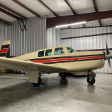How long for a hot start
-
Members Online
- DCarlton
- Immelman
- 65MooneyPilot
- Ragsf15e
- Echo
- MikeOH
- Mooney in Oz
- DanM20C
- exM20K
- Niko182
- toto
- DonMuncy
- BlueSky247
- 1980Mooney
- Rogerg
- MB65E
- donkaye
- varlajo
- blaine beaven
- Joshua Blackh4t
- Sixstring2k
- PilotX
- bhtitle
- ragedracer1977
- FlyVolar
- bigmo
- Guy123
- jamesyql
- Johnny U
- 47U
- hammdo
- PT20J
- McMooney
- philiplane


Recommended Posts
Join the conversation
You can post now and register later. If you have an account, sign in now to post with your account.